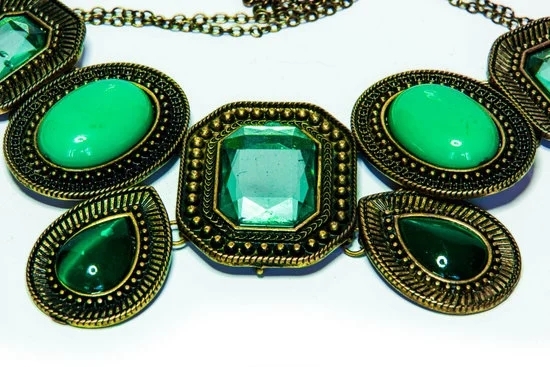Are you interested in learning how to make Native American bead jewelry? This traditional craft has been a significant part of the Native American culture for generations, with each piece being a representation of history, heritage, and spirituality.
In this article, we will explore the significance and history of Native American bead jewelry, the materials needed for creating your own pieces, step-by-step bead weaving techniques, tips for choosing the right beads and colors, traditional patterns and designs, finishing touches and embellishments, as well as understanding the cultural and spiritual aspects associated with these beautiful creations.
Native American bead jewelry has a rich history that dates back thousands of years. It is not only a form of artistic expression but also serves as a symbol of identity and storytelling within indigenous communities. By understanding its cultural significance and historical background, you will gain a deeper appreciation for the craftsmanship that goes into creating these intricate pieces.
Whether you are new to jewelry making or have some experience in the craft, this article will provide you with the knowledge and skills to create stunning Native American bead jewelry. From learning about the materials required to caring for and preserving your finished pieces, we will guide you through every step of the process. Get ready to explore the world of Native American bead jewelry and unleash your creativity with unique designs inspired by tradition.
Understanding the Significance and History of Native American Bead Jewelry
Native American bead jewelry holds deep cultural and historical significance for indigenous communities across North America. For many Native American tribes, beadwork is not just a form of artistic expression, but also a way to communicate stories, traditions, and spiritual beliefs. Understanding the significance and history of Native American bead jewelry is crucial for anyone interested in creating their own pieces.
Beadwork has been an integral part of Native American culture for centuries, with different tribes using distinct styles, patterns, and techniques. Each bead and design holds specific meanings and may be used to convey identity, status, or even messages within the community. Through intricate beadwork, Native Americans have preserved their heritage and traditions, passing down knowledge from generation to generation.
Learning how to make Native American bead jewelry involves more than just mastering the technical aspects of beading; it requires an understanding of the cultural context in which these pieces are created. By recognizing the significance and history behind each design, creators can honor the traditions of Native American artisans while crafting their own unique interpretations.
Incorporating traditional Native American patterns and designs into bead jewelry not only pays homage to the rich cultural heritage of indigenous peoples but also adds authenticity to your creations. Whether it’s Navajo rug patterns or Pueblo pottery motifs, these traditional designs showcase the artistry and symbolism deeply rooted in Native American culture.
By learning about these patterns and incorporating them into your work, you can create meaningful pieces that carry on the legacy of indigenous craftsmanship. Understanding the significance and history of these designs will provide a deeper appreciation for their cultural importance when creating your own unique Native American bead jewelry pieces.
Materials Needed for Making Native American Bead Jewelry
When it comes to making Native American bead jewelry, the materials you choose are of utmost importance. Traditionally, Native American bead jewelry is made using a variety of natural materials such as animal bones, shells, and stones. However, modern bead makers often use glass or plastic beads due to their availability and affordability.
To make your own Native American bead jewelry, you will need the following materials:
- Beading Thread: Choose a strong and durable thread such as nylon or silk that can withstand the weight of the beads.
- Beads: Select high-quality beads in various sizes, shapes, and colors. Traditional Native American bead jewelry often features seed beads in vibrant hues.
- Needles: Beading needles come in different sizes and are essential for weaving the beads together.
- Clasps and Findings: These are used to secure the ends of your jewelry piece and can be made from silver, copper, or other metals.
In addition to these basic materials, you may also want to consider incorporating natural elements such as feathers or leather into your designs to give them an authentic touch. By using these materials thoughtfully and creatively, you can create beautiful pieces of Native American bead jewelry that honor the traditions of indigenous cultures while adding your own unique flair.
| Materials | Description |
|---|---|
| Beading Thread | Strong and durable thread such as nylon or silk. |
| Beads | High-quality beads in various sizes, shapes, and colors. Traditional seed beads are often used in vibrant hues. |
| Needles | Essential for weaving the beads together; come in different sizes. |
| Clasps and Findings | Used to secure the ends of your jewelry piece; can be made from silver, copper, or other metals. |
Step-by-Step Guide to Bead Weaving Techniques
Native American bead jewelry is a beautiful and intricate art form that has been an important part of Native American culture for centuries. Beadwork is not only decorative but also has significant cultural and spiritual importance. In this section, we will provide you with a step-by-step guide to bead weaving techniques, which are a fundamental part of creating Native American bead jewelry.
Basic Bead Weaving Techniques
The most common bead weaving technique used in Native American jewelry is the loom method. This involves threading beads onto a loom and weaving them together using threads or cords. Another popular technique is peyote stitch, which creates a tubular or flat pattern by stitching beads together in a specific pattern.
Gathering Your Materials
Before you begin creating your own Native American bead jewelry, it’s important to gather all the necessary materials. You will need beads of various sizes, colors, and materials, as well as beading thread or cord, needles, a beading loom (if using the loom method), and any additional embellishments you want to incorporate into your design.
Step-by-Step Guide
- Start by selecting the appropriate pattern for your design.
- Thread your needle with the beading thread and begin stringing your beads according to the chosen pattern.
- If using a loom, set up your loom and carefully weave the beads together following the desired design.
- Continue adding beads until you have completed the desired length of your jewelry piece.
- Finish off by tying off the thread securely and trimming any excess.
Learning how to make Native American bead jewelry requires practice and patience, but with dedication, you can create stunning pieces that honor this rich tradition.
Incorporating Traditional Native American Patterns and Designs
Native American bead jewelry is not only beautiful, but also rich in cultural significance and history. When creating your own Native American bead jewelry, it’s important to incorporate traditional patterns and designs to honor the heritage and craftsmanship of indigenous communities. Here’s how you can do that.
One of the most common traditional patterns used in Native American beadwork is the “lazy stitch” or “lane stitch.” This technique involves sewing multiple beads onto a piece of fabric or leather in parallel rows, creating a visually striking design. Another popular method is the “peyote stitch,” which results in a more intricate and textured look. Researching and practicing these techniques will help you bring authenticity to your creations.
In addition to stitches, it’s essential to consider traditional designs when making Native American bead jewelry. Geometric shapes, animal motifs, and symbols such as feathers, arrows, and dreamcatchers are commonly featured in indigenous beadwork. It’s crucial to understand the cultural meanings behind these symbols and use them respectfully in your designs.
When choosing colors for your beadwork, research traditional color schemes used by different Native American tribes. Each color carries its own symbolic significance, so it’s essential to be mindful of this when designing your jewelry. By incorporating these traditional patterns, designs, and colors into your beadwork, you can create pieces that pay homage to Native American heritage while showcasing your creativity and skill.
| Traditional Pattern/Design | Significance |
|---|---|
| Lazy Stitch/Lane Stitch | Creates visually striking designs |
| Peyote Stitch | Results in intricate and textured look |
| Geometric Shapes/Animal Motifs/Symbols | Carry cultural meanings |
Tips for Choosing the Right Beads and Colors
When making Native American bead jewelry, the choice of beads and colors is crucial in creating a beautiful and meaningful piece. Here are some tips to help you choose the right beads and colors for your project:
1. Consider the size and shape of the beads: When making Native American bead jewelry, it’s important to consider the size and shape of the beads you will be using. Different shapes and sizes can create different effects in your design. For example, smaller beads are often used for intricate patterns, while larger beads can make a bold statement.
2. Think about the color scheme: Colors play an important role in Native American bead jewelry, as they often represent certain meanings or have cultural significance. Before starting your project, think about the color scheme you want to use and consider what each color represents in Native American culture. For example, red may symbolize strength or energy, while turquoise is associated with healing and protection.
3. Choose beads that reflect traditional designs: Traditional Native American beadwork often features specific patterns and designs that have been passed down through generations. When choosing beads for your jewelry, look for ones that reflect these traditional designs. You can also incorporate traditional symbols or motifs into your design for an authentic touch.
By following these tips for choosing the right beads and colors, you can create beautiful and culturally meaningful Native American bead jewelry that honors traditional techniques and designs.
Finishing Touches and Embellishments for Your Jewelry
When it comes to making Native American bead jewelry, the finishing touches and embellishments are what sets each piece apart and adds a unique touch. Adding these finishing touches also helps bring out the beauty of the beads and make the jewelry complete. Here are some tips for adding those extra touches to your creations:
- Fringe: Adding fringe to your beadwork can add movement and flair to your jewelry pieces. You can use different lengths and colors of beads to create an eye-catching fringe that complements your design.
- Decorative edging: Consider adding decorative edging to your beadwork using beads of contrasting colors or shapes. This can help frame your design and give it a polished look.
- Embellishments: You can also incorporate feathers, leather, or other traditional materials into your bead jewelry for added texture and visual interest.
In addition to these finishing touches, you may also want to consider incorporating traditional closures such as button-and-loop or hook-and-eye clasps, which not only add functionality but also contribute to the overall aesthetic of the piece.
Remember that when adding embellishments, less is often more. It’s important not to overwhelm the design with too many elements. Instead, carefully select embellishments that enhance the beauty of your beadwork while remaining true to its cultural roots.
With these tips in mind, you can elevate your Native American bead jewelry from beautiful to extraordinary with just a few thoughtful finishing touches.
Understanding the Cultural and Spiritual Aspects of Native American Bead Jewelry
Native American bead jewelry is more than just a fashion statement; it holds deep cultural and spiritual significance for Native American tribes. For many Native American communities, beadwork is a form of storytelling, with each intricate design and pattern representing a specific narrative or tradition. Understanding the cultural and spiritual aspects of Native American bead jewelry is essential for anyone interested in creating their own pieces.
The use of colors in Native American bead jewelry also holds great significance. Each color has its own symbolic meaning, with red representing war or valor, blue symbolizing peace or spirituality, and yellow signifying life or power. Understanding the meanings behind these colors can help creators infuse their designs with deeper cultural and spiritual significance.
In addition to its cultural and spiritual significance, Native American bead jewelry also plays a crucial role in tribal ceremonies and rituals. Traditional regalia often features elaborate beadwork that has been passed down through generations, connecting wearers to their ancestral heritage. By understanding these cultural and spiritual aspects, creators can make informed decisions about the designs they choose to incorporate into their own pieces of jewelry.
How to Care for and Preserve Your Native American Bead Jewelry
Native American bead jewelry is not only a beautiful form of art, but it also holds deep cultural and spiritual significance for Native American people. Once you have poured your time and creativity into making or acquiring your own piece of Native American bead jewelry, it’s important to take care of it properly to ensure its longevity. In this section, we will discuss the best practices for caring for and preserving your cherished beadwork.
Storage
Proper storage is crucial in preserving the quality of your Native American bead jewelry. To prevent damage from dust, moisture, or direct sunlight, it is recommended to store your jewelry in a cool, dry place away from direct sunlight. You can use jewelry boxes lined with soft fabric or acid-free tissue paper to protect your pieces from scratches and tarnishing.
Cleaning
When it comes to cleaning your beadwork, it’s essential to handle it with care. Avoid using harsh chemicals or abrasive materials that may damage the delicate beads or threads. Instead, gently wipe the surface of the jewelry with a soft, lint-free cloth to remove any dirt or residue. For deeper cleaning, you can use a small amount of mild soap and water, but be sure to dry the piece thoroughly afterwards.
Handling
Proper handling is key in maintaining the integrity of your Native American bead jewelry. Avoid excessive pulling or stretching of the threads, as this can cause breakage or loosening of the beads. When putting on or taking off your jewelry, do so carefully and avoid sudden movements that may put stress on the delicate components. By handling your beadwork with mindfulness and respect, you can help ensure its longevity for generations to come.
Taking proper care of your Native American bead jewelry not only preserves its beauty but also honors its cultural significance and craftsmanship. By following these guidelines for storage, cleaning, and handling, you can enjoy your precious pieces for years to come while respecting their cultural heritage.
Inspiration and Resources for Creating Your Own Unique Designs
In conclusion, creating your own Native American bead jewelry can be a deeply meaningful and unique experience. By understanding the significance and history of these traditional pieces, you can appreciate the cultural and spiritual aspects that make them so special. Utilizing the right materials, such as beads and thread, and mastering bead weaving techniques are essential to bringing your designs to life.
When incorporating traditional patterns and designs, it’s important to respect the cultural origins of Native American bead jewelry. Take inspiration from the natural world, tribal symbols, and historical motifs to honor the heritage behind these beautiful creations. Additionally, carefully selecting beads and colors that hold personal or symbolic meaning can add even more depth to your jewelry.
As you complete your pieces, consider adding finishing touches and embellishments that reflect both your creative vision and the time-honored traditions of Native American craftsmanship. Remember to care for your jewelry with gentle cleaning methods and proper storage in order to preserve its beauty for years to come.
Ultimately, there are countless resources available for those looking to delve into the world of creating their own Native American bead jewelry. From online tutorials and instructional books to local workshops led by indigenous artisans, there are endless opportunities to expand your knowledge and skillset in this art form. By exploring these avenues of inspiration, you can develop a unique style all your own while paying homage to the rich cultural heritage of Native American beadwork.
Frequently Asked Questions
What Do You Need for Native American Beading?
Native American beading typically requires a few essential materials. These include beads, thread or string, needles, a beading frame or loom, and scissors. Additionally, some beaders may use leather backing for their projects.
What Type of Beads Are Used in Native American Jewelry?
Various types of beads are used in Native American jewelry, including seed beads, pony beads, and trade beads. These beads are often made from natural materials such as bone, shell, stone, wood, or clay and come in a wide range of colors and sizes.
How Did the Native Americans Make Their Beads?
Traditionally, Native Americans made their own beads using natural materials found in their environment. They would carve bone or shell into disc-shaped beads or use stones to create cylindrical or tubular beads.
Some tribes also used porcupine quills and later adopted glass trade beads introduced by Europeans. The process of making these beads was time-consuming but integral to their cultural and artistic expression.

Welcome to my jewelry blog! My name is Sarah and I am the owner of this blog.
I love making jewelry and sharing my creations with others.
So whether you’re someone who loves wearing jewelry yourself or simply enjoys learning about it, be sure to check out my blog for insightful posts on everything related to this exciting topic!





